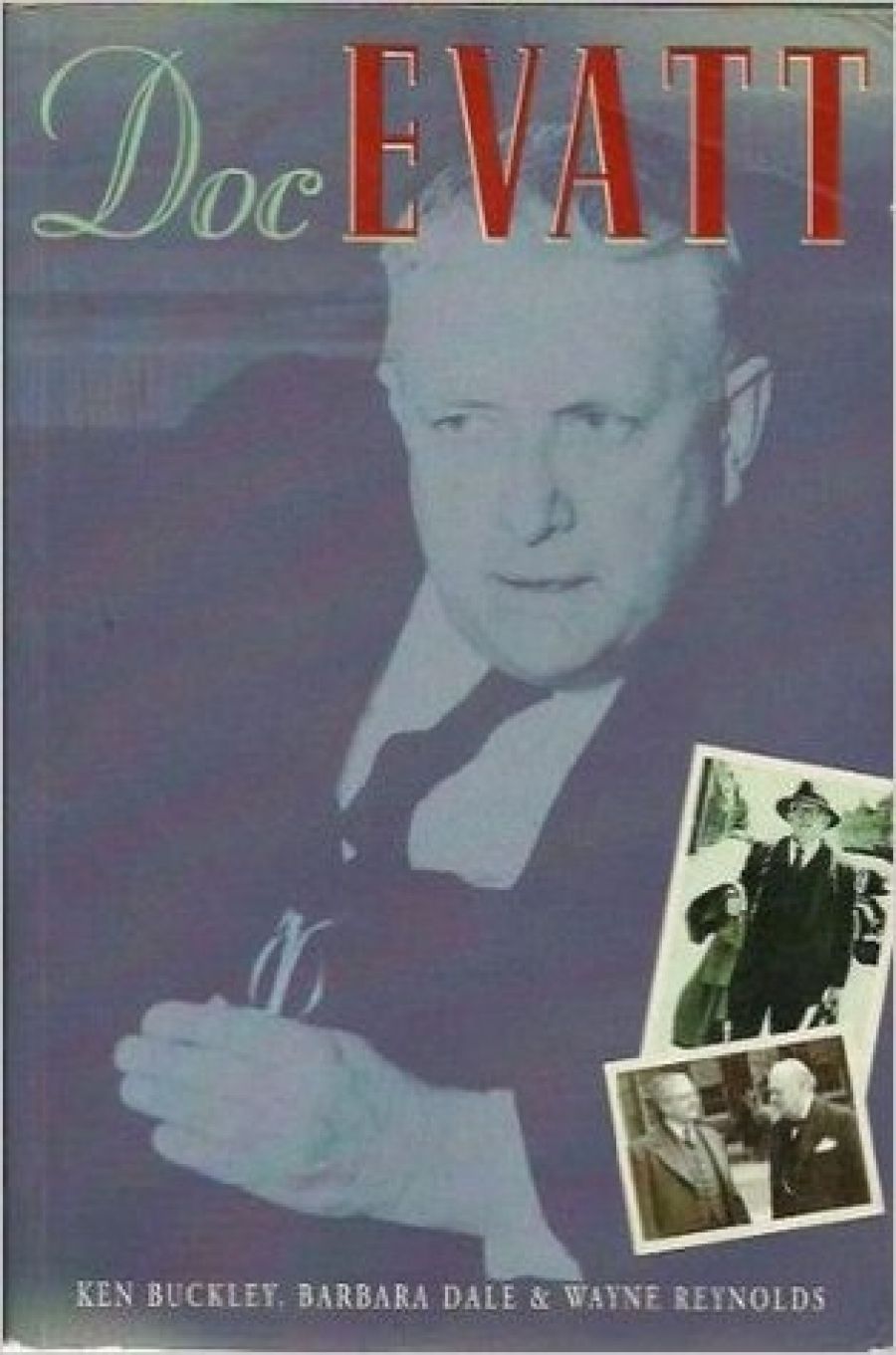
- Free Article: No
- Contents Category: Biography
- Review Article: Yes
- Online Only: No
- Custom Highlight Text:
In his foreword to Doc Evatt, Jim Hagan claims that this is the fourth full-length biography of Dr. H.V. Evatt and suggests that only one other Australian politician has scored as many. Leaving aside the fact that Allan Dalziel never pretended that his book, Evatt the Enigma, was anything more than a profile of the man he worked with for twenty years, these assertions create the misleading impression that a substantial body of literature on Evatt exists. Academics have long lamented the lack of a comprehensive and scholarly biography of one of Australia’s most important and complex judicial and political figures. The very recent appearance of Peter Crockett’s Evatt: A life, characterised by wide-ranging research but a crude psychoanalytical approach, chronic disorganisation, a weakness in the analysis of international affairs, and a lack of historical perspective, disappointed in many ways.
- Book 1 Title: Doc Evatt
- Book 1 Subtitle: Patriot, Internationalist, Fighter and Scholar
- Book 1 Biblio: Longman Cheshire, $34.95
The release of Doc Evatt, sponsored by the Evatt Foundation, was timed to coincide with the hundredth anniversary of Evatt’s birth. The lapse of the thirty-year restriction on a number of archival records meant that the timing was also right in terms of access to valuable sources. It is unfortunate, however, that the Foundation and the publishers did not respond to Allan Martin’s work on Menzies by agreeing to release a two-volume biography of Evatt.
The chronological structure of Doc Evatt would seem to facilitate the coherent approach that Crockett’s work lacked. However, the collaboration between the three authors was, by all accounts, a tempestuous one. The acknowledgments and preface do not indicate that they each worked on different sections of the book: Barbara Dale wrote the chapters on Evatt’s childhood, education and historical works; Wayne Reynolds wrote five chapters on international affairs; and Buckley wrote the remaining chapters.
The impression of close collaboration created by the acknowledgments soon breaks down. For instance, a footnote to a chapter on the war crisis of 1942 states that Reynolds’s PhD thesis is an excellent piece of work and that Reynolds deserves credit for locating some key wartime records! Similarly, the biographical sub-committee of the Evatt Foundation was unable to ensure that the book appeared without the presence of a number of contradictions. For example, Dale’s comment that in 1905 North Sydney proper was a strong working-class enclave sits uneasily with the later assertion that Evatt had no prospect of winning a north shore seat for Labor because Mosman was a relatively well-to-do area. The differences between the personal styles of the authors are frequently jarring, and many of the chapters are too short.
These somewhat pedantic observations are significant only in that they point to a wider problem with the biography. Commentators have consistently bemoaned the complexities and intricacies seemingly inherent in Evatt’s world-view. The observation that a British book on the Tolpuddle Martyrs affair lacked unity of treatment because it was the product of many authors is, ironically, percipient. The difficulties entailed in collaboration, coupled with the opening and closing claims that Evatt had not one, but several, careers, indicates that it was always likely that Doc Evatt would be a fragmentary and disjointed work. Due no doubt to word-length constraints, the sub-committee decided to deal with Evatt's period as a High Court judge in one short chapter and to release a monograph on the subject by Buckley later this year.
As a result, the significance of Evatt’s record on the Bench, his views on states-rights, and the continuities between this period and his subsequent …


Comments powered by CComment